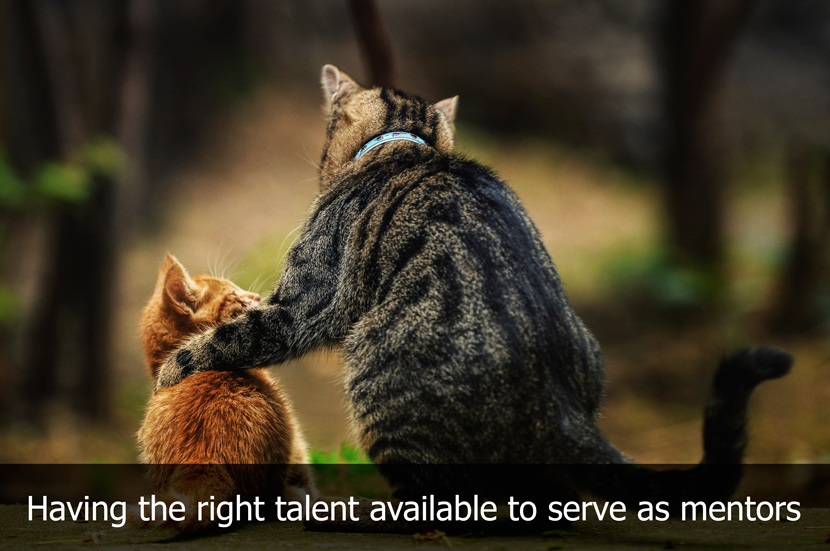Selection and Matching in Mentoring Programs
This article continues an exploration of what can be learned from the Sun Microsystems extensive experience with robust mentoring programs that began with Masterful Mentoring at Sun Microsystems. While that article dealt with some key decisions around mentoring such as formal vs. informal, what metrics will be used to measure progress and success, and the choice to go internal vs. external, this article will delve deeper into the details of selection and matching in mentoring programs.

Mentor Selection
Download the free whitepaper Developing Talent and Tapping Into Potential Through Corporate Mentoring
Having the right talent available to serve as mentors is a crucial variable in the equation of mentoring programs. Over the years, Sun Microsystems discovered the following key methods for selecting top-notch mentors:
- Demonstrated Accomplishments. In this approach, mentees are given the opportunity to review a pool of potential mentors that includes information about the experience, personality, capabilities and skills of each. The mentee then comes up with a short-list of the people they think would serve them best as mentors. Then mentoring program staff figures out who is available and willing to enter into a formal mentoring relationship with the mentee. This is a good method for allowing mentees the freedom to choose what it is they want to learn, and then find the people they think have the most relevant experience in those areas.
- Self-Identified Competency Systems. This method of mentor selection involves the mentee reviewing a list of competencies and selecting the ones they most want to have active mentoring on. The mentee is then able to review the pool of mentors and get in touch with them directly to pursue the potential mentoring relationship. This method should only be engaged when there is a high level of confidence that the mentee has a thorough and unbiased view of what they are good at and where they need additional development. Shaping the list of competencies to choose from is where management can have an influence as to the content of the mentoring program such that business needs are clearly addressed. These competency lists are also tailored to the content knowledge of the specific field or department in which the mentoring will take place.
- If management has a deep understanding of employee development needs, a mentee’s management can go ahead and assign a mentor based on that knowledge.
- Mix-and-Match. In this approach, elements of all three methodologies are combined in order to come up with the right mentor.
In general, the demonstrated accomplishments approach works best at the VP and executive levels of an organization, while self-identified competency systems work best for junior staff where the mentors are only one or two levels higher in the organization’s hierarchy.
Crafting the Mentor-Mentee Match
While the above methods are geared towards figuring out the best mentor, there is a good deal of homework to be done by both mentees and potential mentors leading to crafting the best possible matches, including the following:
- The Mentee’s Mentor Wish List. The mentee begins by preparing a “top 10” list of the mentor’s they think would best serve them, which includes prioritizing the list, clearly articulating a rationale for each choice, and establishing three overall learning goals for their mentoring. Sun’s experience has been that fewer than ten results in the likelihood that the list will need to be revisited based on mentor availability while more than ten makes the wish list process too onerous. Ten has turned out to be the magic number for Sun. This careful planning on the part of the mentee forces a level of clarity that makes for much more successful mentoring.
- The Mentor’s Decision Process. The decision to become a mentor is one not to be taken lightly. It is the mentor’s responsibility to recommend what training and development experiences might be most useful to the mentee, be a source of advice and support, evaluate progress, and generally be available to share in both successes and failures. Generally, a mentor and mentee should not be in the same management chain in order to avoid any potential conflicts of interest. Potential mentors must realistically evaluate their ongoing availability to engage in mentoring relationships.
Sun Microsystems has learned a lot from its robust mentoring programs over the last two decades, including what makes for good selection and matching processes for mentors and mentees. The final installment of this series will focus on summarizing the best and worst mentoring practices from the Sun Microsystems experience.
Don’t Miss These Essential Tools
Leave a Reply
You must be logged in to post a comment.